Dressing for a ski trip? It’s all about layers. The right setup keeps you warm, dry, and ready for anything the mountain throws your way. Here’s the quick formula:
- Base Layer: Wicks sweat and keeps you dry. Go for merino wool or synthetic fabrics. Skip cotton - it holds moisture and makes you cold.
- Mid Layer: Traps heat. Options like fleece, down, or synthetic insulation work great. Pick based on how cold it is.
- Outerwear: Shields you from wind, snow, and rain. Look for waterproof, breathable jackets and pants with good mobility.
- Accessories: Don’t forget gloves, goggles, a helmet, and ski socks. Add hand warmers and sunscreen for extra comfort.
If you’re using Snowfeet* - a compact alternative to skis - you’ll need lighter, more flexible layers. Snowfeet* works with regular winter boots, so you can ditch bulky ski gear and still stay warm and mobile. It’s a simpler, budget-friendly way to hit the slopes.
The takeaway? Smart layering makes all the difference. Start with the basics, adjust for weather conditions, and you’ll stay cozy and comfortable all day.
Ski Layering Guide: What to Wear Skiing (From Socks to Jackets)
Base Layer Basics
Your base layer is like your second skin - essential for staying comfortable and prepared on the slopes.
What Base Layers Do
Base layers are all about managing moisture and keeping your temperature in check. Sitting closest to your skin, they’re your first defense against the chill and sweat that come with outdoor activity.
Moisture-wicking is the star feature here. When you’re working up a sweat on the slopes, a good base layer pulls that moisture away from your skin and spreads it across the fabric’s outer surface, where it can evaporate. This keeps you dry and avoids that unpleasant clammy feeling that can lead to a chill. Without this function, sweat can cool your body too quickly, leaving you cold and uncomfortable.
Base layers also help trap body heat, working with your natural temperature regulation to keep you warm without overheating. With these dual roles - managing moisture and retaining warmth - choosing the right fabric is key.
Best Materials for Base Layers
The material of your base layer makes all the difference in comfort and performance.
- Merino wool: This natural fiber is a favorite for its insulation, moisture-wicking abilities, and odor resistance. It can handle multiple wears without washing, making it perfect for multi-day trips. Plus, even when it’s damp, merino wool keeps you warm and helps regulate your body temperature, which is a lifesaver in cold or high-altitude conditions.
- Synthetic fabrics: Materials like polyester and nylon blends are another solid option. They’re breathable, quick-drying, lightweight, and durable. Synthetic base layers are often more budget-friendly and designed to handle moisture efficiently, making them a go-to for many skiers and snowboarders.
One material to avoid? Cotton. It holds onto moisture instead of wicking it away, leaving you cold and damp - definitely not what you want in mountain weather.
When picking a base layer, think about weight. Midweight layers are great for frigid days, while lightweight layers work well for warmer conditions or high-intensity activities. Aim for a snug fit - not too tight, but close enough to wick moisture effectively without limiting your movement.
Base Layer Tips for Snowfeet* Users
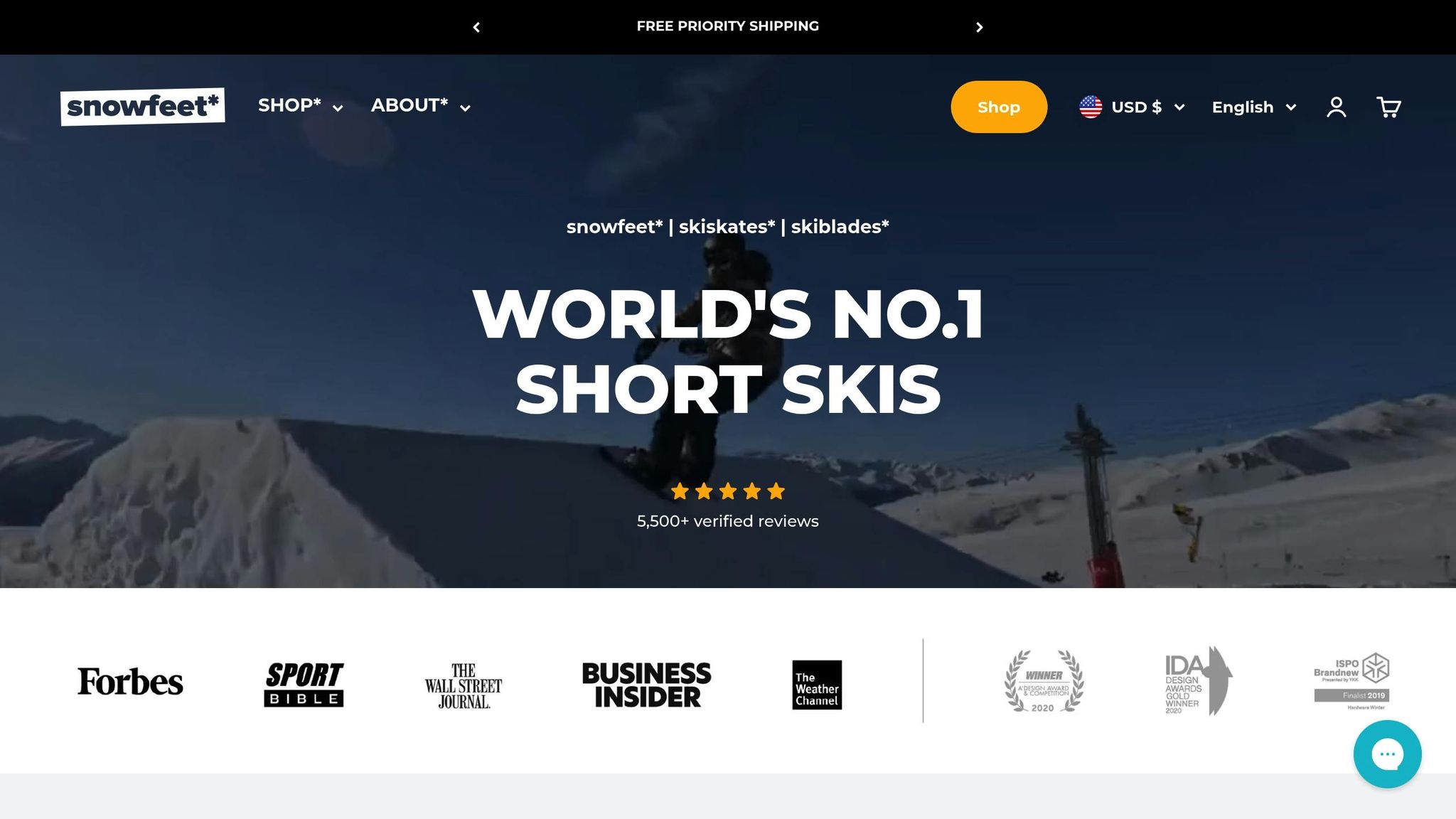
Snowfeet* gear changes the game when it comes to base layers. Its compact and lightweight design gives you more freedom to choose comfortable, lighter layers that won’t hold you back.
Since Snowfeet* gear boosts your agility and encourages more active movement, your body naturally generates extra heat. This means you can often go with lightweight synthetic base layers even in colder weather. Plus, because Snowfeet* works with standard winter shoes, snowboard boots, or ski boots, you have more flexibility in pairing your base layers with your footwear - unlike the rigid systems required for traditional skis. It’s all about staying warm while maximizing your mobility, which is exactly what Snowfeet* gear helps you do.
Mid Layer Selection
Your mid layer is the MVP of your layering system - it keeps you warm when the weather turns chilly and adjusts to changing mountain conditions.
What Mid Layers Do
Mid layers sit snugly between your base layer and outer shell, providing that crucial insulation layer that traps warm air while letting moisture escape. Think of them as your on-demand temperature regulator.
When you're working hard on steep terrain or the sun starts heating things up, you can unzip or shed your mid layer to cool down. On the flip side, when the temperature drops or you're stuck on a windy chairlift, zipping it back up or adding a layer gives you that extra warmth. Plus, they help move moisture away from your base layer, keeping you dry and comfortable.
Unlike base layers that are designed to hug your body all day, mid layers are all about adjustability. Full-zip options let you tweak ventilation, while pullovers are great for locking in warmth when the cold bites. This adaptability is a big win when paired with Snowfeet* gear, which thrives on keeping your layering system lightweight and efficient.
Best Materials for Mid Layers
Choosing the right mid layer material depends on your activity level, weather, and personal preferences. Here’s a breakdown of popular options:
- Fleece: A fan favorite for good reason. It’s lightweight, breathable, and keeps you warm even if it gets damp. Whether it’s polar fleece or microfleece, these options dry quickly, pack easily, and are often budget-friendly.
- Down Insulation: If you’re after serious warmth without the bulk, down is your go-to. It has an amazing warmth-to-weight ratio, but it’s not great when wet. Best for cold, dry days or layered under a waterproof shell.
- Synthetic Insulation: Materials like PrimaLoft or Thinsulate strike a balance between fleece and down. They retain heat when wet, dry faster than down, and tend to be more affordable. Plus, they’re low-maintenance and can handle frequent washing.
- Softshell Jackets: These offer light insulation with added wind and water resistance, making them a solid choice for active skiers or snowboarders.
When deciding, think about the temperatures you’ll face. Go for lightweight mid layers if it’s above 20°F, midweight for 20°F to 0°F, and heavyweight or layered setups for anything below 0°F.
Mid Layers That Work with Snowfeet* Users
Snowfeet* gear takes the flexibility of mid layers to the next level. Known for being lightweight and portable, Snowfeet* pairs perfectly with a variety of mid layer options. Since Snowfeet* works with your regular winter footwear, you don’t have to worry about bulky gear messing with your layering system. This gives you the freedom to mix and match mid layers based on your comfort needs and the day’s weather. Whether you’re hitting the slopes or taking a casual glide, you’ll stay warm and ready for anything.
Outerwear and Protective Layers
Your outerwear is like your personal shield against the elements - keeping wind, snow, and freezing temperatures at bay. It’s a must-have for staying warm and comfortable on the slopes. Just like your base and mid layers, your outerwear should work in sync with Snowfeet* gear to ensure you stay mobile and toasty.
What to Look For in Outerwear
Picking the right ski outerwear can feel overwhelming, but focusing on a few key features can make it easier:
- Waterproofing: Opt for gear with a rating of at least 10,000mm. If you’re skiing in wetter conditions, aim for 15,000mm or higher to stay dry.
- Breathability: For moderate activity, look for a rating of 8,000 g/m²/24hr. If you’re planning on working up a sweat, 15,000 g/m²/24hr or more is ideal.
- Ventilation: Features like pit zips, thigh vents, or chest vents are lifesavers when you need to cool off quickly.
- Seam Sealing: Fully taped seams offer the best water resistance, while critically taped seams cover the most vulnerable areas, balancing protection and affordability.
- Fit and Mobility: Your outerwear should fit comfortably over layers without limiting your movement. Look for details like articulated knees and elbows, gusseted crotches, and adjustable cuffs, hems, and hoods to keep you both comfortable and agile.
Why Snowfeet* Gear Changes the Game
Snowfeet* gear is all about sleek, streamlined performance. Unlike bulky traditional ski gear, it pairs perfectly with more fitted and flexible outerwear. This combo gives you unmatched comfort and freedom of movement, making every run feel smooth and effortless.
sbb-itb-17ade95
Accessories and Footwear for Maximum Comfort
The right accessories can take your ski trip from good to amazing. While your layers handle keeping your core warm, it’s the smaller details - like gloves, goggles, and helmets - that protect you from the cold and wind. Let’s dive into the must-haves that keep you cozy and protected.
Keep your hands warm. Gloves and mittens are a no-brainer for skiing. Mittens tend to be warmer since your fingers share heat, but gloves give you better control for tasks like adjusting your gear. Look for waterproof, insulated options with handy features like built-in goggle wipes, extended cuffs, pockets for heat packs, and even touch-screen compatibility.
Protect your eyes. Goggles are essential for shielding your eyes from wind, snow, and glare. They should fit snugly with your helmet, and if you wear glasses, go for over-the-glass (OTG) models. In harsh weather, goggles are a better choice than sunglasses.
Don’t skip the helmet. Not only does a helmet protect your head, but it also keeps your ears warm. If you’re not wearing one, at least wear a cozy hat. Pair it with a neck gaiter or balaclava to shield your face and nose from biting winds.
Take care of your feet. Ski-specific socks are a game changer. Go for wool or synthetic options that are tall enough to go over your boots but not so thick that they cut off circulation. Stick to one good-fitting pair, and make sure your base layers aren’t tucked into your boots to avoid friction.
Extra warmth for the win. Handwarmers and footwarmers - those little heat packets - are lifesavers, especially if your hands and feet tend to get cold. They provide hours of warmth and can make a big difference on super chilly days.
Lastly, don’t forget sunscreen! The sun’s rays are stronger at higher altitudes, and the snow’s glare can increase your chances of sunburn. Protecting your skin is just as important as staying warm. With the right accessories and footwear, you’ll be ready for a comfortable, worry-free day on the slopes. Snowfeet* gear is designed to work seamlessly with these essentials, giving you maximum comfort on the mountain.
Snowfeet* vs Traditional Ski and Snowboard Gear: Layering Benefits
When you stack up Snowfeet* against traditional ski and snowboard gear, the difference in layering becomes crystal clear. Traditional setups often demand heavy, restrictive clothing to handle the sport’s equipment and conditions. Snowfeet*, on the other hand, is designed to work with your regular winter wardrobe, giving you more freedom, comfort, and ease.
Key Benefits of Snowfeet* for Layering
Less Bulk, More Freedom
Traditional gear often requires thick, technical outerwear to support heavy equipment. Snowfeet*’s compact design lets you stick to lighter, more flexible layers - like your favorite winter jacket - without sacrificing warmth or mobility.
Works with Your Winter Boots
Say goodbye to expensive and stiff ski boots! Snowfeet* pairs perfectly with your regular winter boots, making it a more comfortable and budget-friendly option.
Easy to Pack
Thanks to its small size, Snowfeet* fits right into a standard backpack. That means more room for extra layers or a cozy fleece, unlike traditional gear that needs bulky carriers.
Better Temperature Control
Snowfeet* keeps things simple. Its less restrictive nature allows for better natural warming, meaning you can skip some of the heavy mid-layers and spend less time adjusting your outfit.
Here’s a quick breakdown of how Snowfeet* stacks up against traditional gear:
Comparison Table: Snowfeet* vs Traditional Gear
| Factor | Snowfeet* | Traditional Skis/Snowboards |
|---|---|---|
| Footwear Flexibility | Works with regular winter boots | Requires specialized ski boots |
| Outerwear Requirements | Regular winter jacket is enough | Needs heavy, technical outerwear |
| Layer Mobility | Full range of motion | Bulkier gear limits movement |
| Packing Convenience | Fits in a regular backpack | Requires large, specialized carriers |
| Temperature Control | Promotes natural warming | Harder to regulate with heavy gear |
Save on Comfort and Cost
With Snowfeet*, you can skip the need for specialized, pricey gear like ski boots and technical jackets. This not only saves you money but also gives you the flexibility to invest in versatile base layers and winter clothing that work for all kinds of cold-weather activities - not just hitting the slopes.
In short, Snowfeet* blends effortlessly with your everyday winter wardrobe, letting you enjoy snow sports without the hassle of traditional gear. It’s all about having fun in the snow while staying comfortable and prepared for whatever the day brings.
Conclusion
Nail your ski trip layering game without breaking the bank or overcomplicating things. The secret? Understanding how base layers handle moisture, mid-layers keep you warm, and outerwear shields you from the weather. When you get this layering combo right, you’ll stay cozy, dry, and ready to conquer the slopes.
Snowfeet* takes this concept a step further with their compact, portable design. Unlike bulky gear, Snowfeet* integrates effortlessly into your winter wardrobe and fits snugly into a backpack, making it easy to tweak your layers as the weather or activity changes.
Starting at $250, Snowfeet* offers a practical and budget-friendly way to upgrade your gear without piling on extra costs. It’s a smart investment for anyone looking to simplify their setup while staying prepared.
With Snowfeet*, you get a layering system designed for comfort and convenience, letting you spend more time enjoying the slopes and less time fussing over your gear. It’s all about making your ski days smoother and more enjoyable.
FAQs
How is layering different for Snowfeet compared to traditional ski gear?
Layering for Snowfeet is much simpler and far less bulky than the setup you'd need for traditional skiing or snowboarding. Typically, skiing and snowboarding require a full three-layer system: a base layer to manage moisture, a mid-layer for warmth, and an outer layer to protect against wind, snow, and cold. This setup is crucial for keeping cozy and comfortable during long days out on the slopes.
Snowfeet, on the other hand, offer a more lightweight and compact alternative, which means you can scale back on the layers. You’ll still stay warm and mobile, but without the heavy, restrictive clothing. This streamlined approach makes Snowfeet perfect for anyone who prioritizes convenience and ease of movement while staying comfortable in chilly conditions.
What’s the best base layer material to stay warm and dry on a ski trip?
Choosing the right base layer is key to staying warm, dry, and comfortable out on the slopes. Its main job? Pulling moisture away from your skin. So, the material you pick should match both your activity level and the weather conditions.
Synthetic fabrics like polyester or nylon are a solid choice for high-energy skiing. They’re great at wicking moisture, dry fast, and can handle plenty of wear and tear. If you’re leaning toward something more natural, merino wool is a fantastic option. It offers warmth, breathability, and even resists odors. The only catch? It doesn’t dry as quickly as synthetic options.
Another thing to think about is the weight of your base layer. Go for lightweight if it’s mild or you’re working up a sweat, midweight for cooler days, and heavyweight when it’s downright freezing. Pair that perfect base layer with Snowfeet’s skiblades or skiskates, and you’ll be all set to stay comfy and agile while making the most of your time on the slopes!
What should I look for in ski outerwear to stay warm, dry, and comfortable on the slopes?
To stay warm, dry, and comfortable on the slopes, picking the right outerwear is crucial. Here’s what to look for:
- Waterproof and breathable fabrics: Go for jackets with a waterproof rating of at least 10,000 mm to handle snow and wet conditions. Breathable materials are key to preventing sweat buildup inside your gear.
- Insulation: Synthetic insulation is a smart choice since it keeps you warm even if it gets damp. Jackets with 100-200g insulation are perfect for those chilly days.
- Thoughtful features: Look for practical details like a helmet-compatible hood, adjustable cuffs, a powder skirt, and ventilation zippers. These make it easier to adapt to changing weather and stay comfortable.
- Seam sealing: Fully sealed seams are a must to keep water out and ensure you stay dry, no matter the conditions.
Pairing lightweight and compact Snowfeet gear - like skiblades or skiskates - with the right outerwear takes your slope experience to the next level. You’ll enjoy more mobility and convenience, making your ski trip even better.







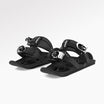













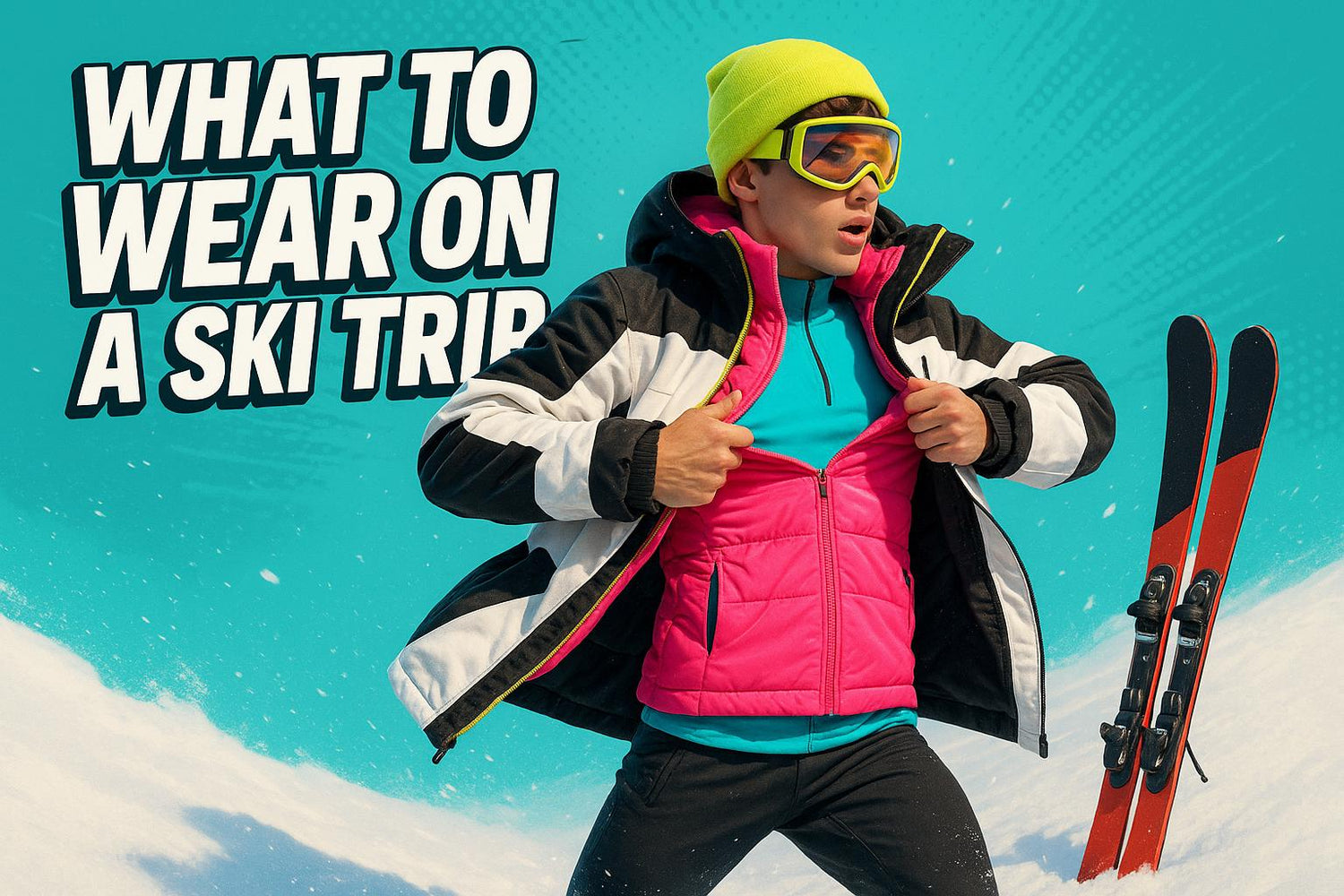






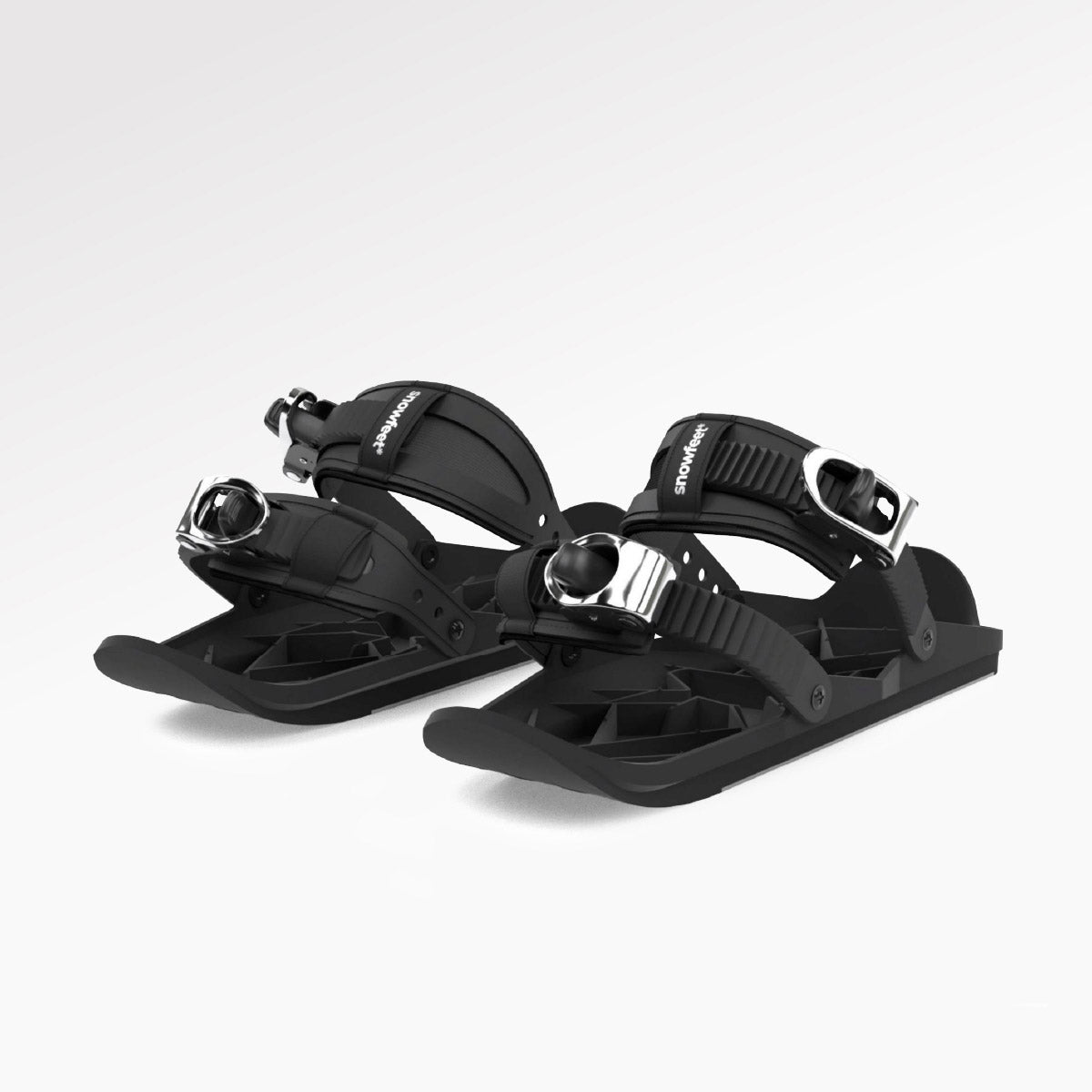
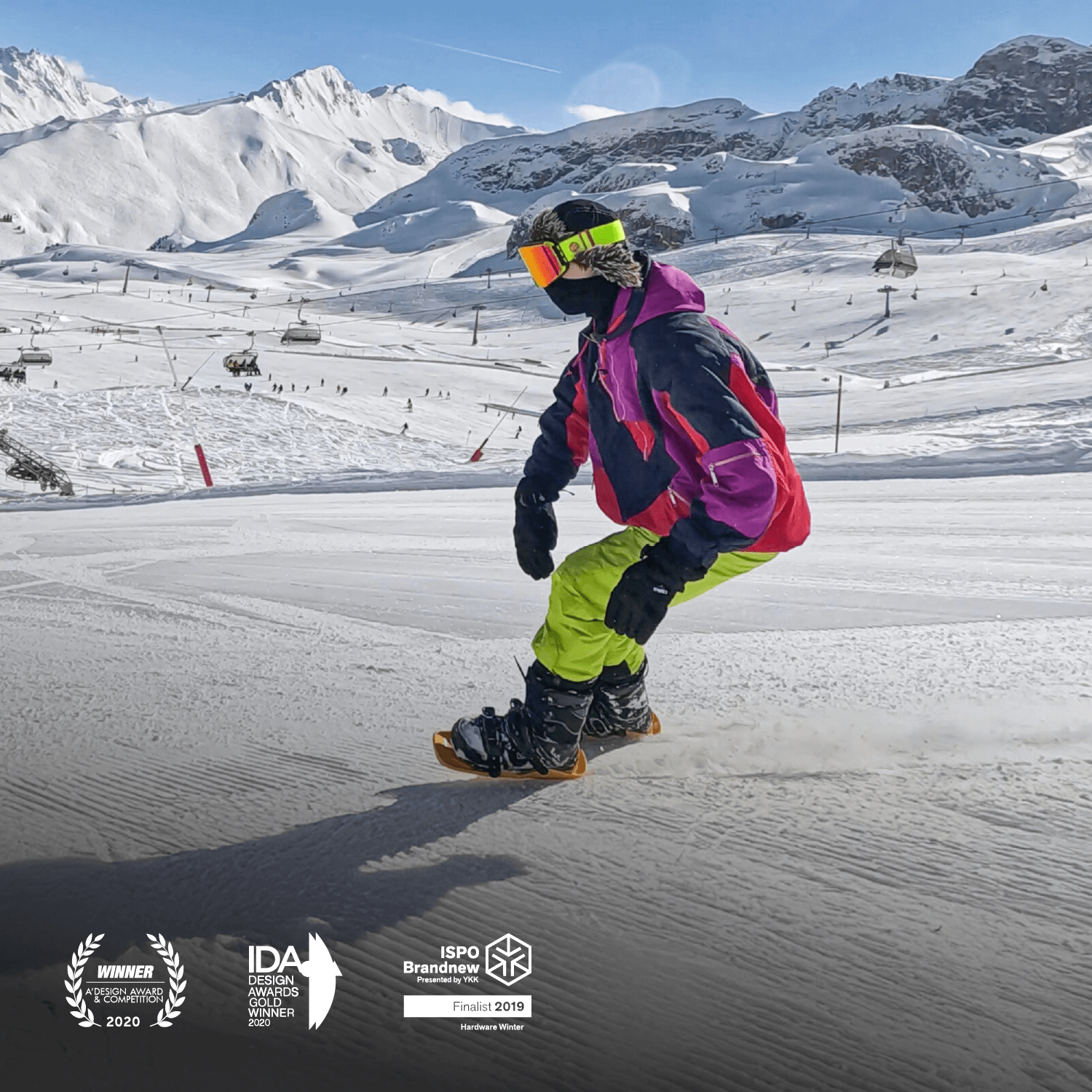




Leave a comment
This site is protected by hCaptcha and the hCaptcha Privacy Policy and Terms of Service apply.